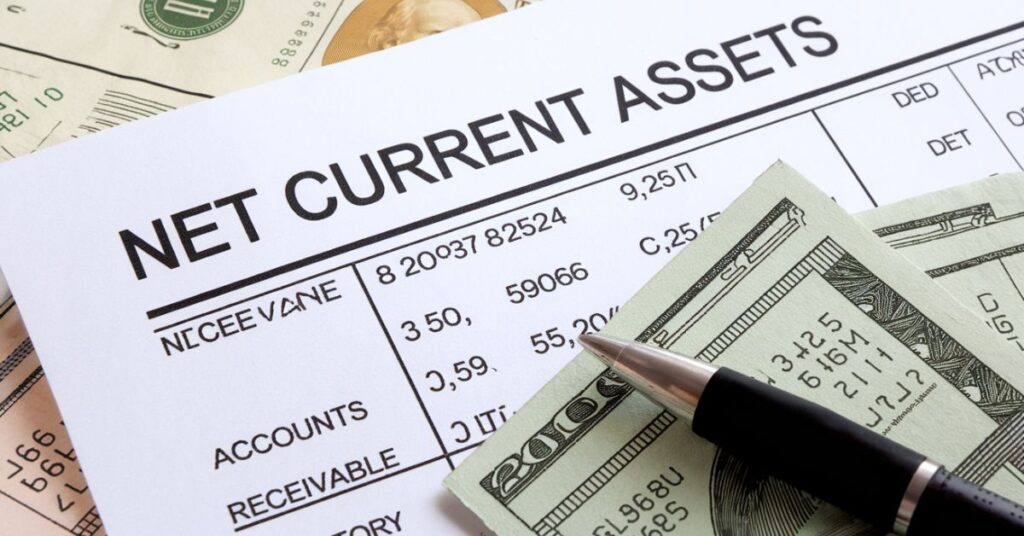Ever wonder how businesses keep their financial engines purring? The secret sauce might just be in their net current assets. This often-overlooked financial metric is like a company’s fiscal pulse, revealing volumes about its short-term health and operational efficiency. Let’s roll up our sleeves and dive into the world of net current assets – your ticket to understanding the heartbeat of business finance. What is Net Current Assets?
What are Net Current Assets?
Picture this: you’re rummaging through your wallet, counting up cash and IOUs. That’s essentially what we’re doing when we talk about net current , but on a much grander scale. Net current assets, often called working capital, is the lifeblood that keeps a company’s day-to-day operations flowing smoothly.
So, what’s the magic formula? It’s simpler than you might think:
Net Current Assets = Current Assets - Current LiabilitiesLet’s break it down further:
- Current Assets: These are the company’s economic resources that can be easily converted to cash within a year. Think of it as the stuff you could pawn off quickly if you needed to.
- Cash and cash equivalents (the crisp bills in your corporate wallet)
- Accounts receivable (IOUs from customers)
- Inventory (goods ready to be sold)
- Prepaid expenses (like rent paid in advance)
- Current Liabilities: These are the financial obligations due within a year. It’s like your monthly bills, but for a business.
- Accounts payable (money owed to suppliers)
- Short-term debt (loans due within a year)
- Accrued expenses (like salaries or taxes)
“Net current assets are to a business what fuel is to a car – you need enough to keep moving, but too much or too little can cause problems.” – Financial Wisdom 101
Why Net Current Assets Matter

You might be thinking, “Okay, but why should I care about net current assets?” Well, buckle up, because this financial metric is more thrilling than a rollercoaster ride at your local amusement park.
- Short-term Financial Health Indicator: Net current assets are like a financial health check-up. A positive figure means the company can cover its short-term obligations and then some. It’s like having enough in your checking account to pay all your bills and still treat yourself to a nice dinner.
- Operational Lifeline: Imagine trying to run a marathon without water stations. That’s what running a business without adequate net current assets is like. It fuels day-to-day operations and provides a cushion for growth and unexpected expenses.
- Financial Analysis Goldmine: Investors and analysts love net current assets. They use it to calculate all sorts of fancy ratios that give insights into a company’s efficiency and liquidity. It’s like being able to peek under the hood of a car to see how well it’s running.
- Stakeholder Confidence Booster: Healthy net current can make everyone happy – from investors looking for stability to creditors assessing lending risk. It’s like having a spotless credit score in the business world.
| Industry | Typical Net Current Asset Levels | Why It Matters |
|---|---|---|
| Retail | High | Need inventory and cash to stock shelves and handle seasonal fluctuations |
| Tech | Variable | May have high cash reserves but fewer physical assets |
| Manufacturing | Moderate to High | Requires inventory and capital for production |
| Services | Lower | Less reliance on physical inventory |
How to Improve Net Current Assets
Alright, you’re convinced net current assets are important. But how do you give them a boost? It’s not about waving a magic wand – it’s about smart strategies and consistent effort.
Strategies for Increasing Current Assets

- Inventory Management: Too much inventory ties up cash, too little means missed sales. Find your Goldilocks zone.
- Implement just-in-time inventory systems
- Use data analytics to predict demand
- Accelerate Accounts Receivable: Get that money in faster!
- Offer discounts for early payments
- Automate invoicing and follow-ups
- Cash Management: Make your money work for you.
- Negotiate better terms with suppliers
- Invest excess cash in short-term, liquid investments
Techniques for Reducing Current Liabilities
- Negotiate Better Payment Terms: Buy yourself some breathing room.
- Ask for longer payment periods from suppliers
- Look for early payment discounts
- Refinance Short-term Debt: Sometimes, a little restructuring goes a long way.
- Convert short-term loans to long-term if interest rates are favorable
- Explore alternative financing options like invoice factoring
- Improve Operational Efficiency: Work smarter, not harder.
- Streamline processes to reduce costs
- Invest in technology to boost productivity
Case Study: The Net Current Asset Turnaround
- Initial Situation:
- Current Assets: $1,000,000
- Current Liabilities: $900,000
- Current Assets: $100,000
- Actions Taken:
- Implemented lean inventory management, reducing inventory by $200,000
- Negotiated 45-day payment terms with suppliers, reducing accounts payable by $100,000
- Offered 2% discount for early payment, accelerating accounts receivable by $150,000
- Result:
- New Current Assets: $950,000
- New Current Liabilities: $800,000
- New Net Current Assets: $150,000
Conclusion
Net current assets aren’t just numbers on a balance sheet – they’re the lifeblood of a business. They tell a story of operational efficiency, financial health, and future potential. By understanding and optimizing net current assets, businesses can weather economic storms, seize growth opportunities, and build stakeholder confidence.
Remember, in the world of finance, net current assets are your secret weapon. They’re the difference between treading water and swimming confidently towards your business goals. So, keep an eye on those current assets and liabilities – your business’s financial health depends on it!
FAQs
- How often should a company assess its net current assets?
At minimum, quarterly. However, in fast-moving industries or volatile economic times, monthly or even weekly assessments can provide valuable insights. - Can negative net current assets ever be a good thing?
While generally a red flag, some high-turnover businesses like grocery stores can operate successfully with negative net current assets due to their unique cash flow patterns. - How do net current assets differ for service vs. product-based businesses?
Service businesses typically have lower net current assets as they don’t need to maintain large inventories. Their focus is often on managing accounts receivable efficiently. - What role do net current assets play in company valuation?
They’re a key component in assessing a company’s liquidity and short-term financial health, which can significantly impact valuation, especially for businesses seeking investment or considering M&A activities. - How can small businesses effectively manage their net current?
Small businesses can focus on timely invoicing, careful inventory management, and negotiating favorable payment terms with suppliers. Cash flow forecasting is also crucial for anticipating and managing short-term financial needs.






